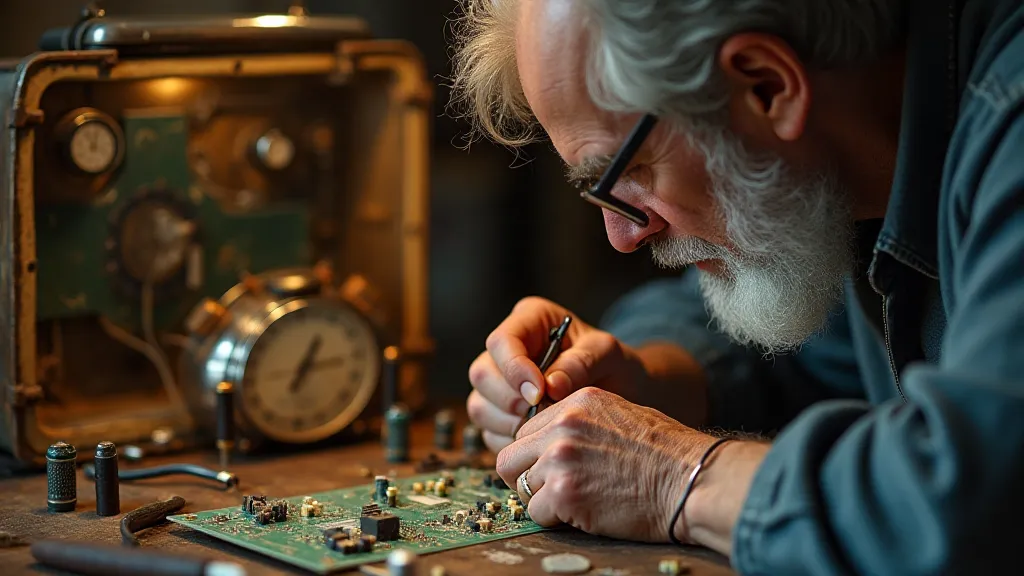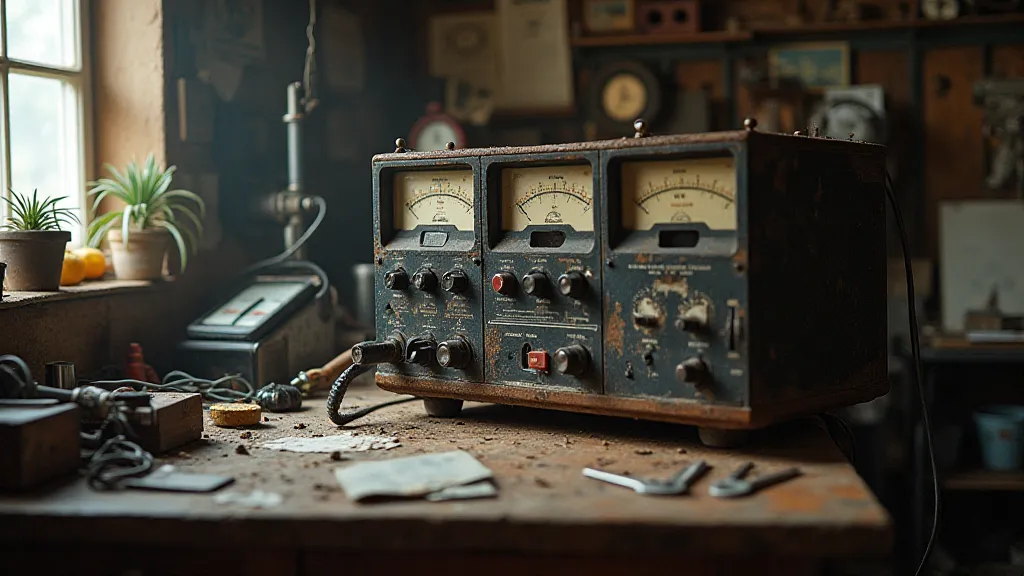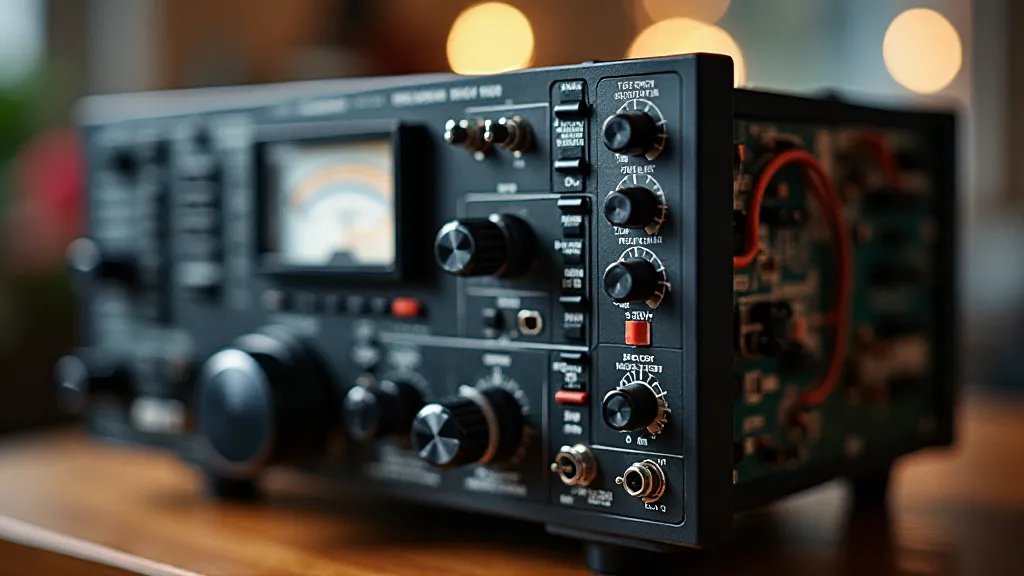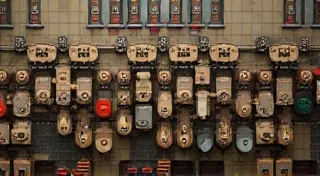Beyond the Signal: The Intangible Rewards of Building Your Own Transceiver
There’s a peculiar romance that clings to antique accordions. The worn bellows, the tarnished keys, the faint scent of dust and history – it's a tactile connection to a bygone era of music and craftsmanship. They represent an age when ingenuity wasn't just rewarded, it was *required*. And that same spirit of resourcefulness, that drive to create and understand, is what draws many of us to the pursuit of building our own ham radio transceiver.
It’s easy to get caught up in the technical specifications – the wattage, the frequency range, the modulation schemes. These are important, of course. But the true reward isn't just about sending a signal across the airwaves. It's about the journey, the learning, the deeply personal satisfaction of bringing a complex piece of technology into existence through your own hands.
I remember my grandfather, a quiet, unassuming man, restoring a 1930s Majestic radio. He wasn't an electronics engineer; he was a carpenter. Yet, he patiently traced circuits, replaced vacuum tubes, and meticulously cleaned every component. He didn't need to transmit anything; the act of restoration itself was the goal. He taught me, not through lectures, but through observation and shared effort, the value of perseverance and the beauty of functional artistry. That experience planted a seed—a fascination with taking things apart, understanding how they worked, and, ultimately, building them anew.
The Allure of the Schematic
Building a ham radio transceiver isn’t about following a recipe. It’s about understanding the ingredients and how they interact. The schematic diagram, initially daunting, becomes a map, a challenge to decipher. Each resistor, capacitor, transistor – each symbol representing a specific function – tells a story of electrical engineering. You’re not just building a device; you’re engaging with a rich history of innovation.
It's surprising how much problem-solving becomes involved. The theory is vital, yes, but the real learning happens when things don't work as expected. That moment when the signal is weak, or the modulation is distorted, is not a failure. It's an opportunity. It forces you to question your assumptions, to re-examine your work, to consult datasheets, and to delve deeper into the underlying principles. That's where the growth happens – in the careful analysis, the methodical troubleshooting, the gradual unraveling of the puzzle.
And the problem-solving isn't just about electronics. It's about spatial reasoning, about fine motor skills, about patience. Just as the accordion maker needed to be adept at both metalworking and woodworking, building a transceiver often requires a diverse skillset. Soldering tiny components, carefully routing wires, ensuring proper ventilation – each task demands precision and attention to detail. Understanding the regulatory landscape and obtaining the necessary licenses is also crucial; delving into topics like those discussed in The Guardians of the Airwaves: Regulations and Licensing for Amateur Radio Operators can prove incredibly valuable for any aspiring builder.

Beyond the Breadboard: The Satisfaction of Construction
The breadboard is a wonderful place to experiment, to test circuits, to prove concepts. But there's a different kind of satisfaction that comes from transitioning to a more permanent construction method – a perfboard, a PCB, or even a custom-built enclosure. Suddenly, your creation begins to feel less like a collection of components and more like a cohesive device, something you can be genuinely proud of.
Choosing the right components, sourcing them from different vendors, optimizing the layout for performance and aesthetics – these decisions all contribute to the final product. It's a process of continual refinement, a constant striving for improvement. And that's what makes it so rewarding. It’s not about achieving perfection; it’s about the journey of improvement and the inherent joy of creation. The entire process, from conceptualization to finished product, can be considered an act of alchemy, transforming raw materials, as explored further in The Alchemy of Components: Transforming Raw Materials into Radio Voices.
Think about the antique accordion again. The craftsmanship isn't just about the mechanics of the instrument – it's about the artistry of the design, the quality of the materials, the care taken in every detail. The same principles apply to building a transceiver. A well-built device isn't just functional; it's a testament to the maker’s skill and dedication.
Preserving a Legacy: Connecting with the Past
Building a ham radio transceiver isn’t just about creating something new; it's also about connecting with the past. Amateur radio has a long and storied history, born from a spirit of innovation and a desire to connect with others, regardless of distance. From the early days of spark-gap transmitters to the sophisticated digital modes of today, amateur radio has been at the forefront of technological advancement.
Building a transceiver, even a simple one, places you within that legacy. You’re continuing a tradition of ingenuity and experimentation. You’re learning from the pioneers who came before you. And you’re contributing to a community of like-minded individuals who share a passion for radio communication. Understanding different approaches to signal propagation and antenna design is a key element of this legacy, an area beautifully elucidated in The Language of Loops: Exploring Different Antenna Configurations.

The Deeper Meaning of Signal Transmission
Beyond the technical aspects, building a transceiver offers a profound connection to a history of innovation and communication. The act of sending a signal is more than just transmitting a message; it's participating in a global network of enthusiasts, hobbyists, and pioneers who have shaped the landscape of radio technology. Consider the effort and expertise needed to transmit effectively – the alignment of components, the careful design of circuits, and the understanding of fundamental physics. Each step contributes to a larger narrative of human ingenuity.
The challenges inherent in building a transceiver mirror those faced by the early pioneers of radio, who wrestled with unpredictable signals and limited resources. It’s a humbling experience, and one that fosters a deep appreciation for the advancements we enjoy today.
Troubleshooting and the Path to Mastery
The journey of building a transceiver is rarely linear. There will be setbacks, moments of frustration, and unexpected challenges. However, it is through these obstacles that true learning occurs. The ability to diagnose and repair faults—the art of troubleshooting—is as crucial as the initial design and construction.
A weak signal can be caused by a myriad of factors: a faulty component, a poorly soldered joint, or even interference from external sources. Methodically investigating each possibility, consulting datasheets, and experimenting with different solutions—these are the hallmarks of a skilled builder. This problem-solving process instills a sense of perseverance and resourcefulness that extends far beyond the realm of electronics.
The Joy of Sharing and Community
Building a transceiver isn't a solitary pursuit. There’s a vibrant community of amateur radio enthusiasts who are eager to share their knowledge and experience. Online forums, local clubs, and hamfests provide opportunities to connect with like-minded individuals, learn new techniques, and collaborate on projects.
The camaraderie and support within this community are invaluable. Whether you’re seeking advice on a particularly challenging circuit or simply looking for someone to share your enthusiasm, you’re sure to find a welcoming and supportive environment. The exchange of ideas and the collaborative spirit are essential to the continued evolution of amateur radio.
More Than Just Signals: A Sense of Accomplishment
The ability to transmit and receive signals across the airwaves is undoubtedly a significant achievement. But the true reward of building your own transceiver extends far beyond that. It’s the sense of accomplishment, the satisfaction of conquering a complex challenge, the confidence that comes from knowing you can build something with your own hands.
It's about the quiet pride you feel when you explain to someone how your device works, or when you share your creation with other enthusiasts. It's about the joy of knowing that you’re part of a community that values ingenuity, collaboration, and a love of radio. It's a deeper connection—a personal resonance with the spirit of invention, a tangible link to the enduring human desire to explore, create, and connect.
My grandfather’s Majesty radio still sits in my workshop, a constant reminder of the power of perseverance and the beauty of functional artistry. And building my own ham radio transceiver? It’s a continuation of that legacy – a testament to the enduring spirit of innovation, and a deeply personal journey of learning and creation.






